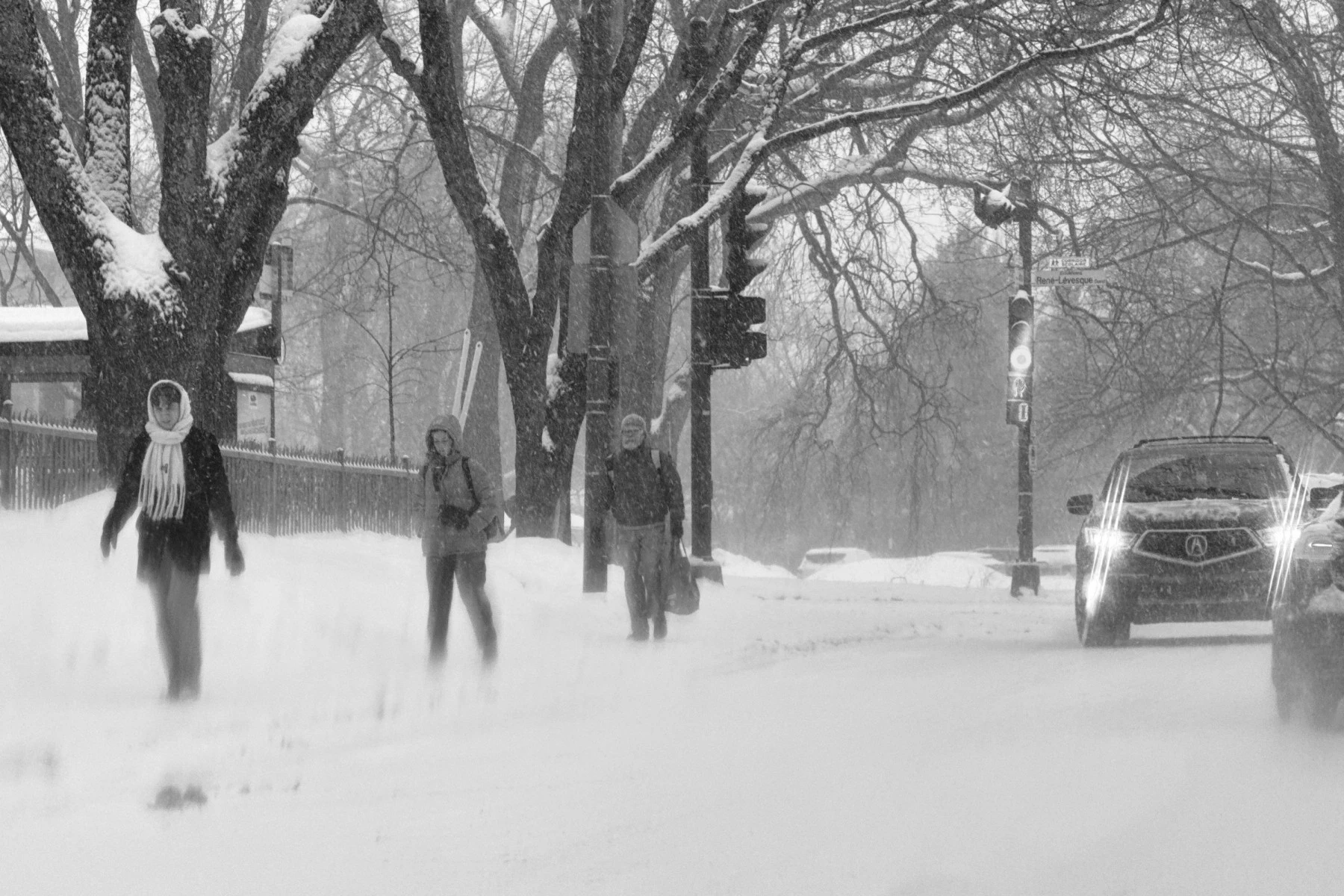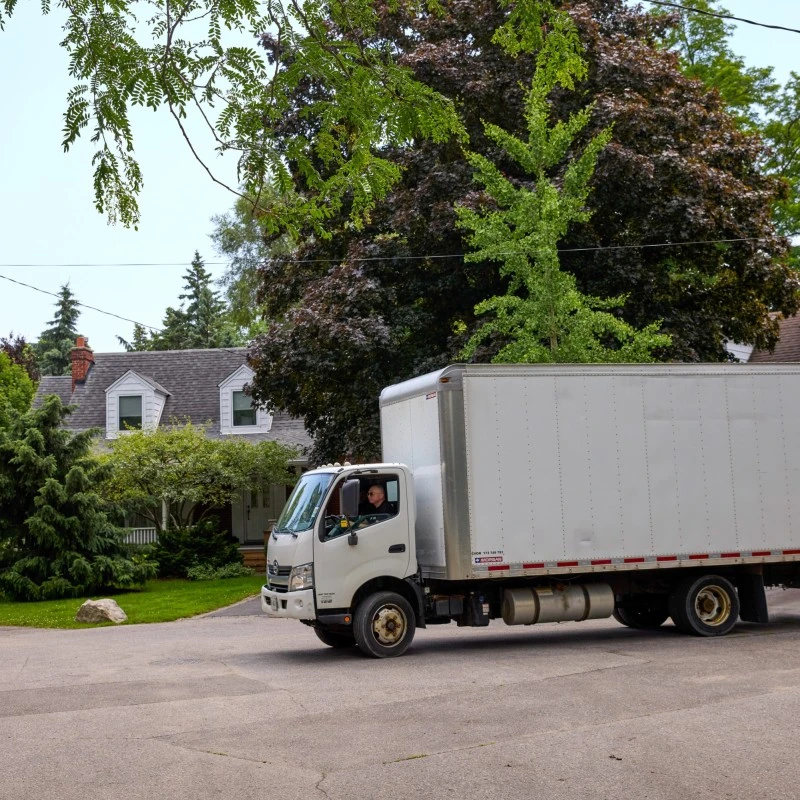How to survive your first Canadian winter as a newcomer


There’s no doubt about it, Canadian winters are challenging. Yes, winter driving, shovelling snow, and months of sub-zero temperatures might seem intimidating. However, with the right preparation, you can survive Canadian winters with ease and comfort.
A move to Canada is exciting, especially if you enjoy winter activities such as skiing, snowboarding, ice hockey or snowshoeing. Understandably, the excitement also comes with a bit of concern. There are downsides to consider, too. For some of you, it can be hard to adjust to a new climate, especially in the first year.
This article covers all the details of winter living, from proper winter clothing and gear to transportation and beyond.
Dressing for the cold

Layers and wool accessories are the secret to staying warm during Canadian winters. Layering basics include:
Base layers
You’ll want to choose a base layer to wear underneath your regular winter clothes. Base layers can vary in warmth, depending on the temperatures and how much time you'll spend outdoors. These layers include cotton or merino long johns, and a tank top or camisole with a long-sleeved shirt overtop. Merino wool or thin cashmere are best for this, as they are nice and warm, but do not scratch against the skin.
Middle layers
Wear a warm wool cardigan, turtleneck, or thick hoodie as a middle layer when dressing for Canadian winters.
Jackets and coats
If you’re moving to the more temperate weather regions on B.C.’s west coast or Halifax, dress for the cold rain and wind. An insulated, waterproof jacket is perfect. If you won’t be outside for long, such as walking from your car to your office, a wool jacket will work. Wool is warm, water-repellent, and offers a dressier appearance.
Designed for snow and sub-zero temperatures, the warmest coats and jackets are stuffed with goose down. Again, if you need a dressier look, a thick wool coat, preferably long, will keep you warm enough for your commute to school or work, etc.
Winter accessories
In Canada, beanies are called by their French name ‘toques’ (pronounced 'toohk'). A wool toque is the most common winter hat in Canada. If you want a dressier look, a Russian Ushanka is extremely warm, and a nice one adds style to any winter outfit.
Wool or lined leather gloves and wool or Gore-Tex mittens will help to keep your hands warm, and a nice wool scarf is essential. If it's really cold, go for socks made from alpaca, as they're the warmest wool to wear. Merino socks also come in thinner varieties and are great for winter sports or dressier outfits.
Footwear
Canadian winters require waterproof, insulated boots with good grip. If you need different footwear for work or daily activities, keep a pair at work or school to change into once you get there.
Winter weather safety tips
Walking safely on the ice
Walking on ice or packed snow can be dangerous and requires some nuance to do it safely. The most important factor to remember is going slowly. Take small, careful steps and keep your feet close to the ground. Bend your knees a little bit as you walk, for better balance. Walk extra carefully on stairs and uneven ground. If you are walking a long distance, invest in a pair of ice grips for your shoes.
Safe winter driving
You’re required by law to swap your regular tires for winter tires on October 1st, and keep them on until May 1st—unless you live on B.C.’s temperate west coast. Most people can get by with standard winter tires, but if you live in the mountains with many windy roads, you may want to invest in studded tires (100% worth it!).
If you encounter icy or unplowed roads, go slowly. It may sound counterintuitive, but if you start to skid when driving on these roads, don't engage your brakes. Slowly turn your steering wheel toward the direction you are skidding.
If you feel nervous about winter driving, take a driving lesson in the snow with a certified driving instructor. This will also be a good exercise before applying for a Canadian driver's license as a newcomer. The peace of mind will take a lot of your winter-driving stress away—guaranteed.
Pack an emergency kit in your car during the winter. Keep fresh water, blankets, snacks, a headlamp, batteries and even a small power bank to charge your phone or headlamp.
Commuting in Canada during the winter
 Public transit is a great way to get around in the winter. The drivers are professionals. You also don’t have to worry about winter roads. Buses and trains run reliably throughout the winter, although sometimes delays can happen. During harrowing storms, some rural bus routes may be cancelled last minute, so stay on top of checking websites for updates.
Public transit is a great way to get around in the winter. The drivers are professionals. You also don’t have to worry about winter roads. Buses and trains run reliably throughout the winter, although sometimes delays can happen. During harrowing storms, some rural bus routes may be cancelled last minute, so stay on top of checking websites for updates.
If there is a bad storm or unsafe conditions, such as when the roads thaw out and refreeze, opt for public transit—it's much safer. If you prefer to drive, take it slow in winter. Make sure you turn your headlights on if you drive through foggy patches.
Keeping your home warm (and safe)
 Canadians use a huge amount of resources to keep their homes warm in the winter.
Canadians use a huge amount of resources to keep their homes warm in the winter.
How to keep your heat bill down
Here are ways you can keep your heat bills down and increase your home’s energy efficiency:
-
Seal up drafts in your home. Look for gaps around windows, doors, and chimneys, and seal them with weatherstripping, caulk, or foam insulation.
-
Make sure your attic, walls and pipes are insulated well.
-
If you have older, single-pane windows, consider using window film. It’s not pretty, but it will prevent heat loss during the winter.
-
Always keep your curtains and blinds closed at night and on significantly cold days. This will trap the warm air inside your home.
-
Turn your thermostat down when you are asleep or away, and only heat the rooms in use. Close the doors to unused rooms.
-
Let the sun in when it's shining.
-
Consider using a small space heater in the rooms you use most.
-
Get used to wearing bulky and warm sweaters, shawls and warm socks while inside.
-
Clean your furnace filter as needed.
-
Use your ceiling fans on low. Heat rises, and gentle fans blow the heat down to the living spaces.
-
Develop a regular tea habit. Certain herbal teas, such as ginger, cloves and cinnamon, will warm you from the inside.
-
If you are cold, do some baking. The oven will help warm your house.
Keep your pipes from freezing
To keep your pipes from freezing, insulate them with foam pipe covers, especially in unheated areas like basements, garages, and crawl spaces. Keep your home heated to at least 12°C even when you're away. If you will be gone all day, let faucets drip slightly to keep water moving, and open cabinet doors under sinks to allow warm air to circulate around the pipes. If you're expecting extreme cold, consider using a space heater in vulnerable areas or wrapping pipes with heat tape for extra protection.
Preparing for storms
Sometimes big storms knock the power out, or a large tree can fall on the road, blocking access and travel. Here are some things to stock up on in the fall, in preparation for winter:
-
Non-perishable food items
-
Candles
-
Batteries
-
Emergency kits
-
Toilet paper
-
Jugs of potable water
-
Propane stove and propane
-
Solar lights
Beat the winter blues
 The short days and cold temperatures can cause sadness, low energy and lack of inspiration in the winter. To beat these winter blues, here are a few ways you can keep your spirits up:
The short days and cold temperatures can cause sadness, low energy and lack of inspiration in the winter. To beat these winter blues, here are a few ways you can keep your spirits up:
- Spend as much time outdoors in natural light as possible, even on cloudy days (UVB light rays can penetrate clouds).
- Stay active with winter sports or indoor exercise.
- Eat well, prioritising vitamin D and DHA.
- Stay connected with friends.
- Keep a regular sleep schedule.
- Use a light therapy lamp if the dark is really getting to you.
- Saunas, hot tubs and hot springs are your best friends.
- Dive into creative or intellectual pursuits. Completing creative projects releases dopamine in your brain, a neurotransmitter responsible for pleasure, motivation and reward.
Canadian winters have their charms
Those living in northern countries have learned to embrace winter rather than fear or resent it. You may find that you love ice fishing or snowshoeing. Stock up on hot chocolate, go shopping for woolies, and surrender to the quiet, dark beauty that is Canadian winter.
What do our customers say?




























